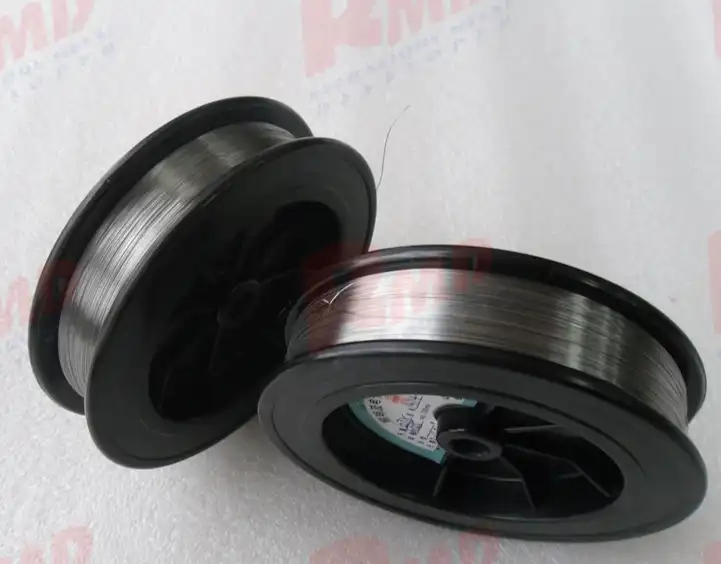The Fundamentals of Molybdenum Wire
Composition and Properties of Molybdenum Wire
Molybdenum is created from unadulterated molybdenum, an obstinate metal known for its excellent properties. This basic piece awards molybdenum a remarkable arrangement of qualities that make it priceless in different applications. The wire shows striking strength, keeping up with its primary trustworthiness even at raised temperatures. Its high liquefying point, surpassing 2600°C, empowers it to endure outrageous intensity without undermining its presentation. Moreover, molybdenum flaunts amazing electrical and warm conductivity, pursuing it an ideal decision for applications requiring proficient energy move.
Manufacturing Process of Molybdenum Wire
The creation of molybdenum includes a complex assembling process that starts with high-virtue molybdenum powder. This powder goes through a progression of medicines, including sintering and hot working, to make a thick and uniform material. The subsequent molybdenum bar is then exposed to a drawing cycle, where it is gotten through continuously more modest passes on to decrease its measurement and increment its length. This cool working method shapes the wire as well as improves its mechanical properties. The last step frequently includes strengthening to alleviate inside burdens and accomplish the ideal actual attributes.
Grades and Classifications of Molybdenum Wire
Molybdenum wire is available in various grades and classifications to cater to different industry requirements. The most common grades include pure molybdenum and doped molybdenum. Pure molybdenum offers excellent electrical conductivity and is often used in lighting applications. Doped molybdenum, on the other hand, contains small amounts of additives like lanthanum oxide or potassium, which enhance its high-temperature performance and recrystallization properties. These grades are further classified based on their diameter, tensile strength, and purity levels, allowing users to select the most suitable type for their specific applications.
Applications of Molybdenum Wire
Molybdenum Wire in Electronics and Lighting
The gadgets and lighting businesses intensely depend on molybdenum wire for its outstanding properties. In the domain of lighting, molybdenum fills in as an essential part in extreme focus release lights, where it capabilities as terminals and backing structures. Its capacity to endure high temperatures and oppose consumption settles on it an optimal decision for these requesting applications. In hardware, molybdenum finds use in vacuum tubes, x-beam tubes, and other high-power gadgets. Its brilliant electrical conductivity and warm solidness guarantee dependable execution in these basic parts.
Aerospace and Defense Applications
The aviation and protection areas influence the interesting properties of molybdenum wire to upgrade the exhibition and unwavering quality of different frameworks. In airplane motors, molybdenum is used in warming components and sensors, where its high-temperature obstruction and soundness are vital. The wire likewise assumes a part in rocket innovation, filling in as a part in direction frameworks and impetus units. Its capacity to keep up with strength and respectability under outrageous circumstances makes molybdenum a significant material in these high-stakes applications.
Industrial and Metallurgical Uses
Molybdenum wire finds extensive use in industrial and metallurgical processes. In the field of metal processing, it serves as a vital component in high-temperature furnaces and heating elements. The wire's exceptional heat resistance allows it to withstand the extreme temperatures required for metal smelting and heat treatment processes. Additionally, molybdenum wire is employed in the production of other metals and alloys, where it acts as a support structure or electrode in electrochemical processes. Its corrosion resistance and stability make it an ideal choice for these demanding industrial applications.
Advantages and Challenges of Using Molybdenum Wire
Benefits of Molybdenum Wire in Various Applications
Molybdenum offers a plenty of benefits that pursue it a favored decision in various applications. Its remarkable intensity opposition permits it to keep up with primary respectability and execution at temperatures where different materials would fall flat. This property is especially significant in high-temperature modern cycles and aviation applications. The wire's astounding electrical conductivity makes it ideal for use in electronic parts and lighting frameworks, guaranteeing proficient energy move. Besides, molybdenum wire's consumption opposition broadens its life expectancy in brutal conditions, diminishing upkeep necessities and further developing in general framework unwavering quality.
Limitations and Challenges in Working with Molybdenum Wire
Despite its numerous benefits, working with molybdenum wire presents certain challenges that must be addressed. One significant limitation is its susceptibility to oxidation at high temperatures in the presence of oxygen. This necessitates the use of protective atmospheres or coatings in certain applications to prevent degradation. Additionally, molybdenum wire can be brittle at room temperature, requiring careful handling during manufacturing and installation processes. The wire's high melting point, while advantageous in many scenarios, can also pose challenges in joining and forming operations, often requiring specialized techniques and equipment.
Comparison with Alternative Materials
When compared to alternative materials, molybdenum often stands out due to its unique combination of properties. While tungsten wire offers higher temperature resistance, molybdenum provides better ductility and machinability, making it more versatile in certain applications. In comparison to steel or copper wires, molybdenum excels in high-temperature environments where these more common materials would fail. However, its higher cost compared to some alternatives may limit its use in non-critical applications. The choice between molybdenum and other materials ultimately depends on the specific requirements of the application, balancing factors such as performance, cost, and availability.
Conclusion
Molybdenum wire stands as a testament to the remarkable properties of refractory metals, offering a unique combination of high-temperature resistance, electrical conductivity, and strength. Its diverse applications across industries underscore its importance in modern technology and engineering. As research continues, the potential for new and innovative uses of molybdenum wire remains vast, promising exciting developments in the future. If you want to get more information about this product, you can contact us at rmd1994@yeah.net.
